

FOREWORD
The exotic automotive world is one that is filled with surprises, experiences and new friendships all surrounding the unrivalled passion for the exotic automobile. Rudolf van der Ven is the embodiment of these characteristics allowing myself and my team the option to collaborate on the topic of this unique photobook covering fifty years of the supercar.
Rudolf’s journey in this book starts with the Lamborghini Miura SV, one of the greatest of its time, past the likes of the McLaren F1 and my all-time favourite, the Ferrari F50. As the spiritual successor to the Ferrari F40, the Italian thoroughbred embodies everything a supercar should be; an uncompromising, purist approach combined with a delightful midmounted V12 connected to 6-speed manual gearbox.
As the cherry on the cake, you are able to take off its roof panel allowing for an open-top driving experience which hasn’t been surpassed by any other car. Only one comes close, and this German supercar is also part of Rudolf’s magnificent book; the illustrious Porsche Carrera GT.
Now let’s turn the page, and let yourself be engulfed by Rudolf’s automotive background stories which are accompanied by his wonderful photography work.
Tim ‘Shmee150’ Burton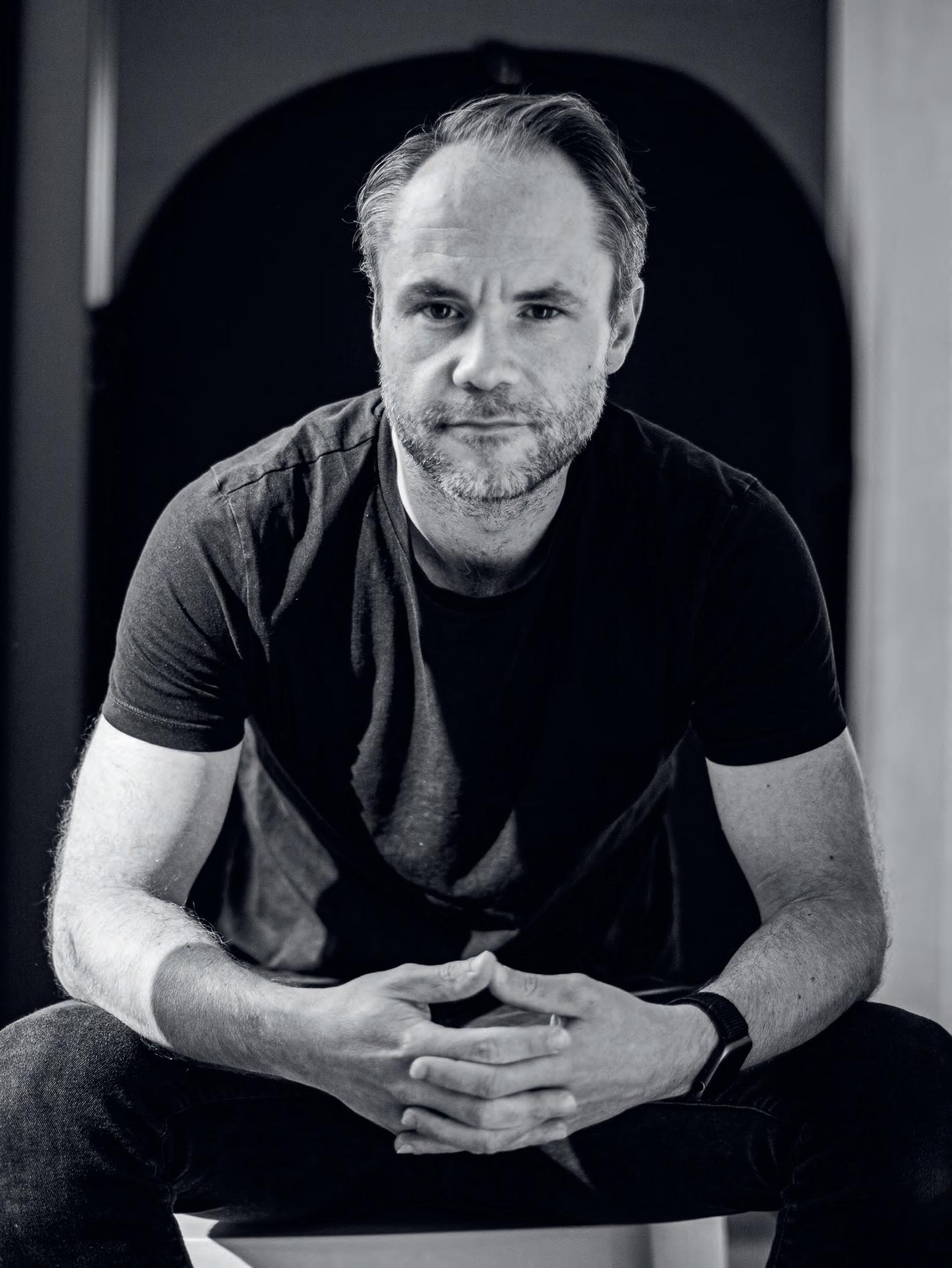
INTRODUCTION
I was making my way through quiet downtown Brussels in April 2019, driving a bright orange Range Rover Sport SVR. I had finally got my drivers’ licence two years earlier (at age 31 –you may laugh) and a few months later my friend Joke De Nul reached out. Her agency was handling Land Rover’s social media in Belgium, and she was wondering if I’d like to have a car for the weekend in exchange for some photos. Would I!
I hadn’t really taken photos of cars before. I was obsessed with them as a child and early teenager, but for whatever reason I lost touch and became more interested in planes, cameras, computer games and designing websites. But now that I finally had my licence, I enjoyed driving and photographing cars I couldn’t afford, and eventually it became a tradition. So, here I was, driving this massive supercharged V8 super-SUV, by far the fastest car I had driven up to that point.
I had experimented with night photography using flashes and strobes but didn’t quite feel it. I had a small LED video light however, and wondered what would happen if I light-painted a car with it (not really knowing it’s actually a pretty common practice among car photographers).
For those who don’t know, light-painting is a combination of setting your camera shutter time up for a long exposure (in my case, usually between 4 and 10 seconds) while moving a light source (nowadays I use an LED wand).
I parked in front of a small palace in Brussels, put my camera on a tripod and moved my little LED light along the Range Rovers’ shoulder. Though not blown away by the results, I did like the look of it and simply kept doing it. I eventually got better and thoroughly enjoyed it, up to the point where I decided I would put all my focus on light-painting. I quit my job and slowly entered the mysterious world of supercars.
Fast forward a few years and here we are. I am still enjoying it tremendously and am fortunate to have shot so many cars little Rudolf could only dream of. Being able to bundle them in this book is a privilege, and an unexpected consequence was that I got to meet so many great people during the entire adventure.
I enjoyed every second of it, and I hope you will too.
Rudolf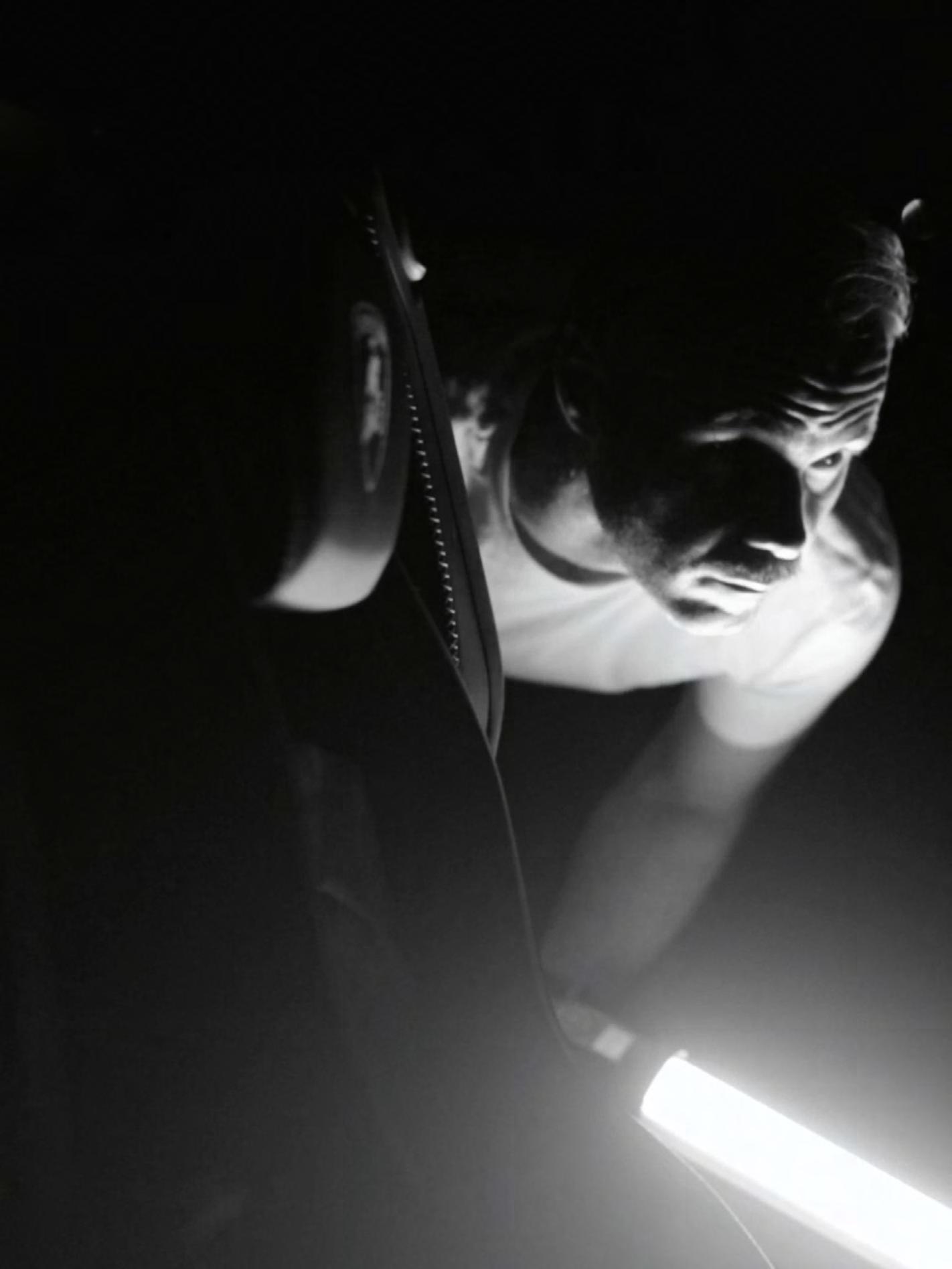
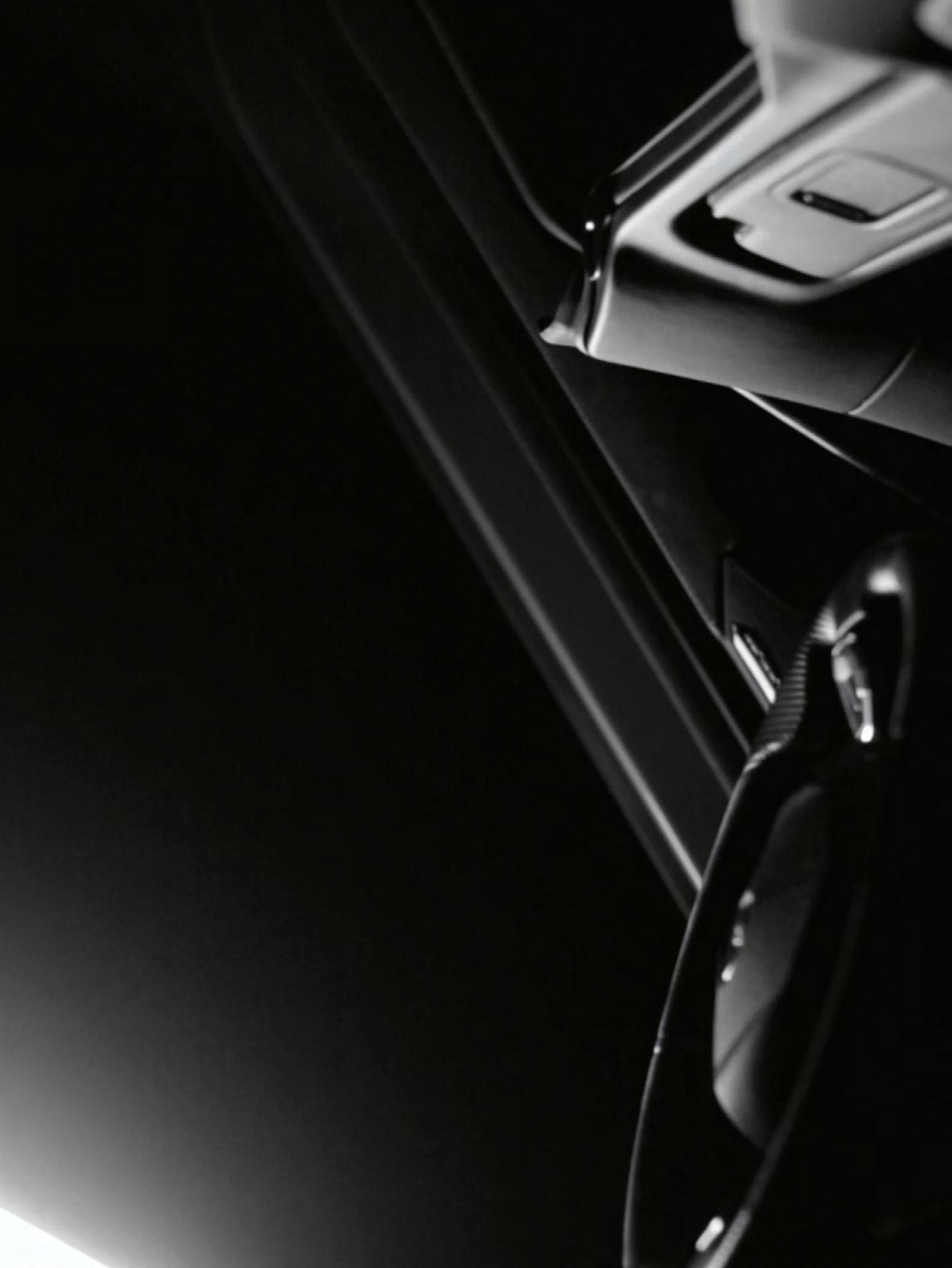
‘I prefer to create mystique, rather than show all the details.’

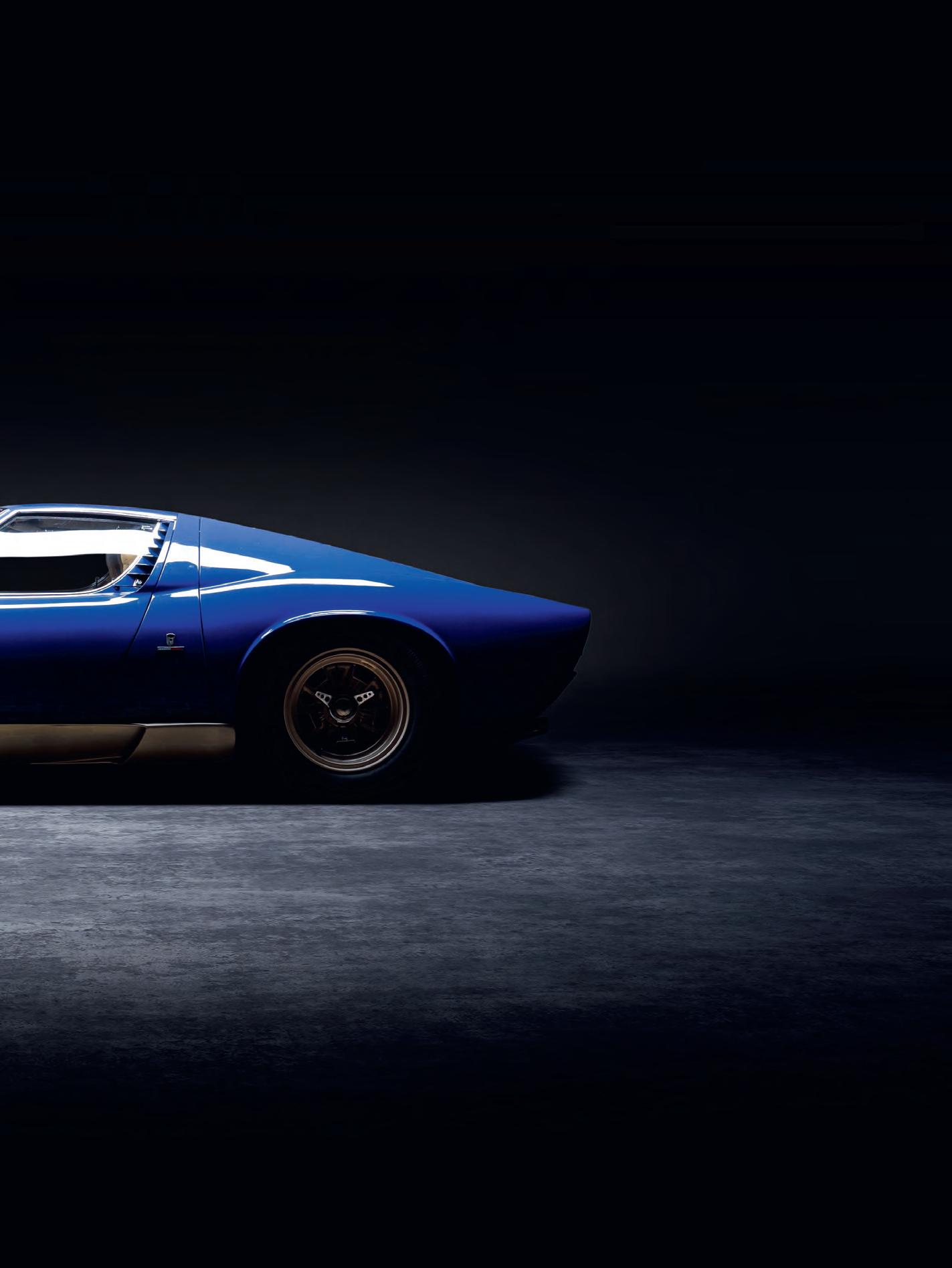
When writing a book daftly titled Supercars, one inevitable result is an avalanche of debate about whether or not a car is an actual supercar and if it has a place in this book. What is a supercar, really? Where’s the line between a sports car and a supercar?
Fortunately, that struggle doesn’t apply one bit to the first car in this book: the Lamborghini Miura. The only debate here is whether this was the first true supercar or not. Many argue that that title belongs to the MercedesBenz 300 SL, but personally I disagree.
The Miura was the first mid-engined road car (well, apart from something called the Matra Djet – raise your hand if you’ve heard of it), something we now take for granted in many supercars that often distinguishes them from grand tourers – which most car enthusiasts agree are not true supercars. Although, granted: that line gets blurry with a few cars in this book.
The fact that Lamborghini’s first flagship car would turn out to be a high-performance, mid-engined supercar carries a lot of irony. Ferruccio Lamborghini was dissatisfied with his grand tourers – most famously his Ferrari 250 GT – and founded Lamborghini to offer a better driving experience in a more luxurious grand tourer. This vision was reflected in Lamborghini’s first production models: the 350 GT and 400 GT, two comfortable grand tourers produced from 1964 until 1968 (why Ferrari never sued Lamborghini for that naming convention is beyond me).
But while working on GT cars, three of Lamborghini’s top engineers came up with a side project: a true race car for the road. By the way, those engineers were Gian Paolo Dallara (yes, him), Paolo Stanzani (yes, him) and Bob Wallace (yes, him).
The now legendary trio would work on the car in their own time, which usually meant late nights, with the goal of convincing Ferruccio that producing a supercar wouldn’t have to be costly. When Ferruccio was finally made aware of the project, he greenlighted it with the primary intention of using the car for marketing purposes. It’s safe to say Ferruccio had no idea how the Miura would change Lamborghini’s future.
Technically, the Miura was a masterpiece. The 4-litre V12 from the 400 GT was mounted transversally in the rear, then merged with the 5-speed transmission and differential – a future trademark for Lamborghini. The V12 put out 345 BHP and 355 NM (262 lb-ft) of torque, impressive numbers for the time. Suspension was upper/ lower wishbone all round, and everything was based round a monocoque design. Not the first car to do it, but definitely rare in the 1960s.
But let’s be honest: few of us care how well it drives. When I think about the Miura, I can only think about its absolutely stunning design penned down by Marcello Gandini – it’s one of his most iconic designs.
The car in the photos is a particularly beautiful Miura part of the B Collection, along with the Ferrari F40, F50 and Bugatti EB 110 in this book.
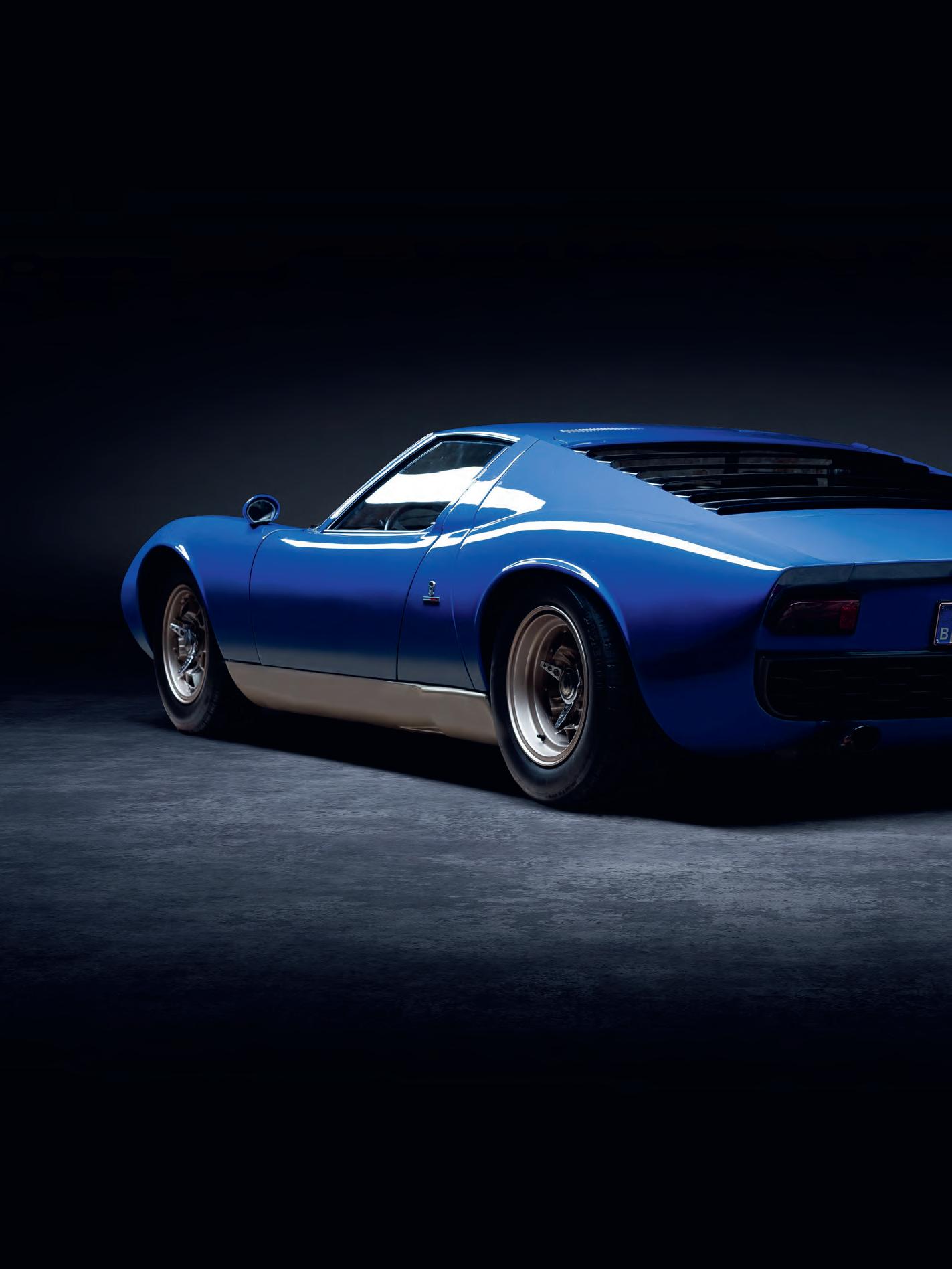
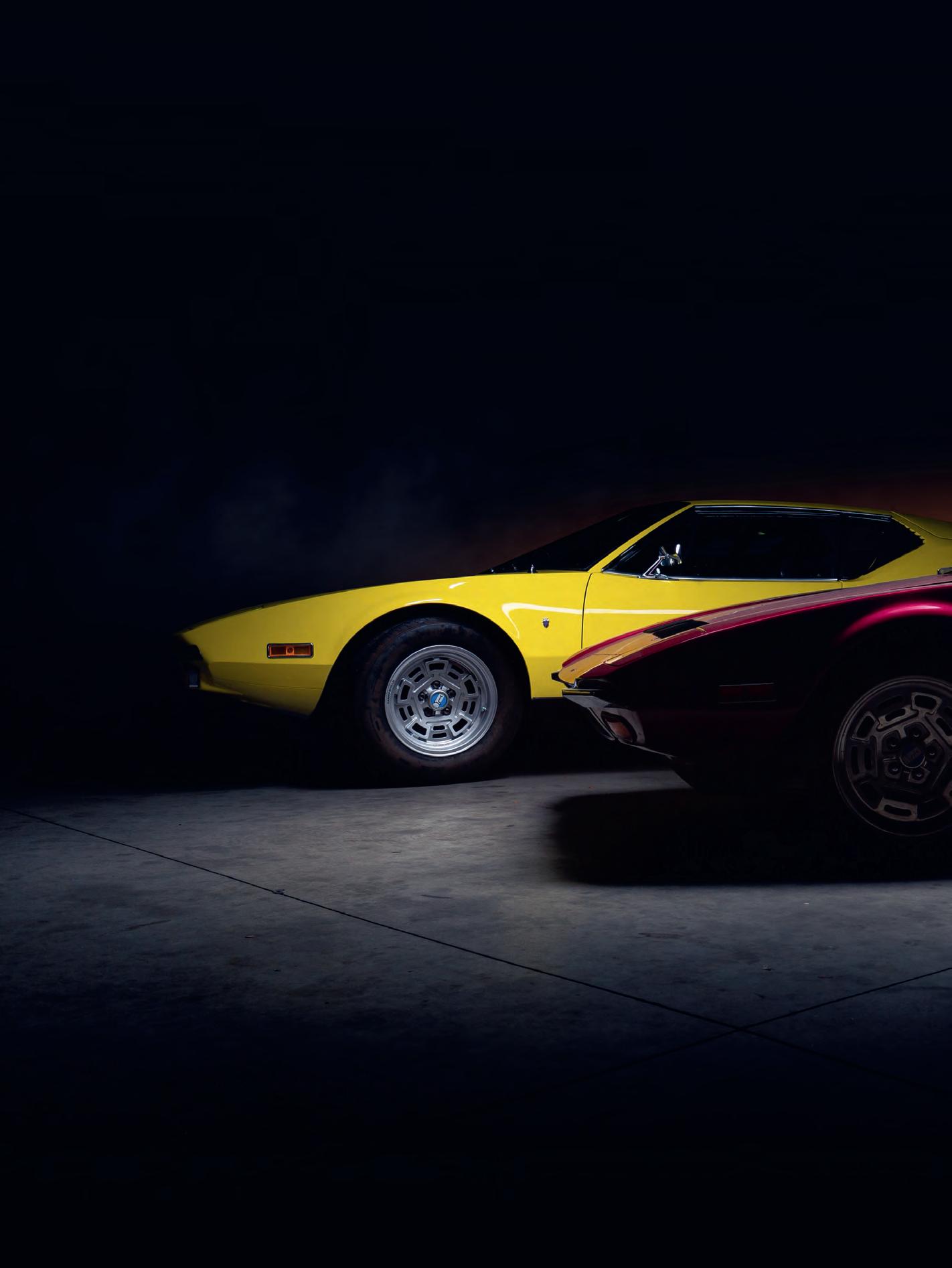
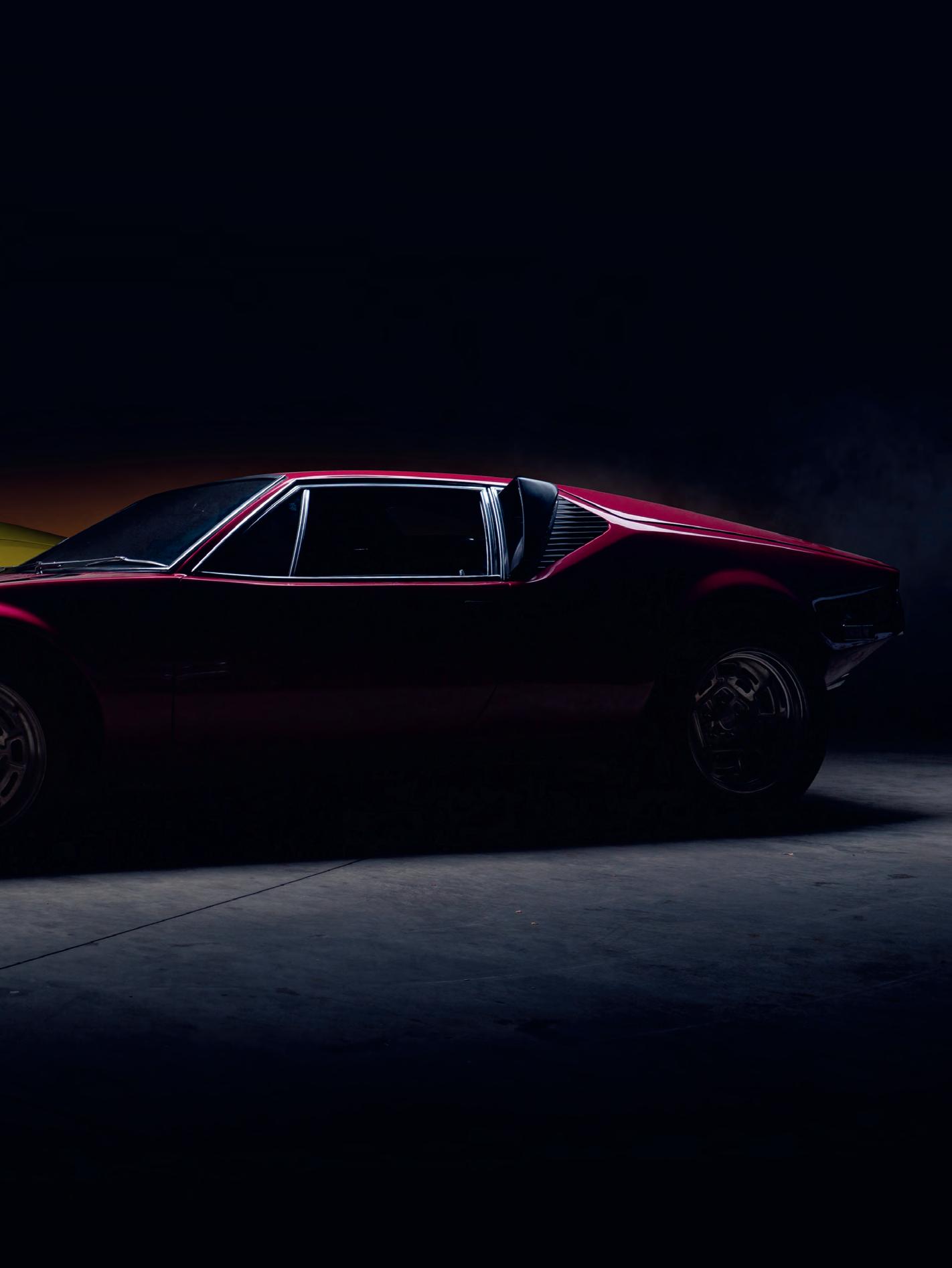

The story of De Tomaso would make for one hell of a Tom Cruise movie. Alejandro de Tomaso was born in 1928 in Buenos Aires to a ‘politically prominent’ family. His fate took a turn for the worst in 1955 when he was accused of plotting against the Argentinian president of the time, and he was forced to flee to Italy - where his grandfather had emigrated from.
During his twenties Alejandro had raced plenty in Argentina, so he strategically decided we would settle in Modena, the centre of the booming Italian car industry. He soon married the American Isabelle Haskell, and became a racing driver for Maserati and others.
His racing career never truly took off: despite participating in four Grand Prix races, he never scored any points. And so he pursued his true passion: building cars. In 1959, he founded De Tomaso. Like most car companies at the time, the original goal was to build racing cars (like the 1970 Williams Formula 1 car), but soon they would expand to building high-performance sports cars.
In 1964, De Tomaso designed their first road car, the 1.5-litre inline-four Vallelunga, hoping to sell the design to another company. With no takers, De Tomaso finally commissioned a coachbuilder to produce the aluminium body and build the car himself. Fifteen were built at De Tomaso, until Ghia offered to build another fifty in their Turin production facility, this time with fibreglass bodies.
During this time De Tomaso met Carroll Shelby, and Shelby commissioned the Argentinian to design and deliver a new Can-Am race car, after finding out the Shelby Cobra would not be able to compete. De Tomaso and Shelby were in constant conflict over the design of the car however, and De Tomaso missed his delivery deadline for five cars. Shelby pulled out and famously joined the Ford GT40 team.
De Tomaso was furious and decided to continue work on the car. Ghia once again offered to finalise the design, and in 1967 it would enter production as the Mangusta - Italian for mongoose, an animal known for killing cobras. I see what you did there, Alejandro. 400 Mangustas would be produced, the majority of which were for the US market.
As soon as the first Mangusta rolled off the production line, De Tomaso started work on its successor: the Pantera. The Pantera used Ford’s 5.8-litre Cleveland V8 engine with 330 BHP and 408 Nm (301 lb-ft) of torque. The high torque numbers made the Pantera famously easy to drive at lower speeds, an advantage over the competition at the time. At the same time it meant impressive acceleration: thanks to its light dry weight of 1.400 kg, the Pantera did 0 to 100 km/h in just 5.5 seconds. Its transmission was a 5-speed manual ZF transaxle, shared with the Maserati Bora. The car also featured several novelties at the time, including electric windows, air conditioning and ‘open door buzzers’.
In 1971, Ford saw potential in the Pantera and offered to sell it through their Lincoln-Mercury dealerships in the US. Ford had noticed quality problems on many of the body panels, and offered to get involved with their production, greatly improving the overall quality on post-1971 cars.
Ford had sold about 5.500 US cars by 1975 when they decided to pull out. They had also discontinued the Cleveland V8 engine in 1974, but De Tomaso found a way to source them through Australia. Despite Ford disengaging, De Tomaso would continue to sell the Pantera for another two decades in the rest of the world. Several iterations would follow, including the GTS model with several internal upgrades and more performance. A total of 7.260 Panteras were produced.
I wasn’t particularly hopeful of finding a Pantera to shoot any time soon, and had already anticipated on having to go abroad for one. Turns out I didn’t have to go far at all: CarCave, a classic car dealership near my hometown, didn’t have just one Pantera: they had two.
Owner Roel Geraerts was more than happy to accommodate a shoot, and give some history on both of the cars. They were both early Panteras, with a full service history, currently being restored to their original state.
